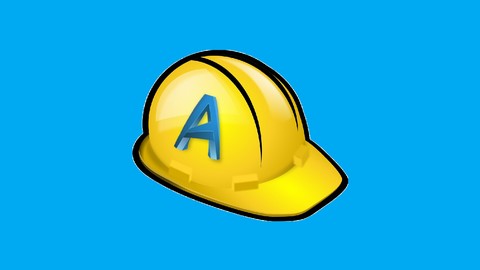
Mastering AutoCAD Civil 3D: Working with corridors
Mastering AutoCAD Civil 3D: Working with corridors, available at $39.99, has an average rating of 4.15, with 18 lectures, 4 quizzes, based on 22 reviews, and has 105 subscribers.
You will learn about A summary overview of the components in a corridor and the workflow to join them together. Traditional and non-traditional innovative examples of using corridors on design projects. Tips and tricks to maximise drawing performance, increase usability, and allow easy changes. How to quickly create the main outputs from a corridor to illustrate your proposal. This course is ideal for individuals who are CAD designers in the Civil Engineering industry looking to stand out from colleagues. or Civil Engineering university students with basic software knowledge wanting to get their career off to a good start. or Users of other Autodesk products e.g. Revit, wanting to learn new skills with a similar part based modelling software. It is particularly useful for CAD designers in the Civil Engineering industry looking to stand out from colleagues. or Civil Engineering university students with basic software knowledge wanting to get their career off to a good start. or Users of other Autodesk products e.g. Revit, wanting to learn new skills with a similar part based modelling software.
Enroll now: Mastering AutoCAD Civil 3D: Working with corridors
Summary
Title: Mastering AutoCAD Civil 3D: Working with corridors
Price: $39.99
Average Rating: 4.15
Number of Lectures: 18
Number of Quizzes: 4
Number of Published Lectures: 18
Number of Published Quizzes: 4
Number of Curriculum Items: 22
Number of Published Curriculum Objects: 22
Number of Practice Tests: 2
Number of Published Practice Tests: 2
Original Price: $19.99
Quality Status: approved
Status: Live
What You Will Learn
- A summary overview of the components in a corridor and the workflow to join them together.
- Traditional and non-traditional innovative examples of using corridors on design projects.
- Tips and tricks to maximise drawing performance, increase usability, and allow easy changes.
- How to quickly create the main outputs from a corridor to illustrate your proposal.
Who Should Attend
- CAD designers in the Civil Engineering industry looking to stand out from colleagues.
- Civil Engineering university students with basic software knowledge wanting to get their career off to a good start.
- Users of other Autodesk products e.g. Revit, wanting to learn new skills with a similar part based modelling software.
Target Audiences
- CAD designers in the Civil Engineering industry looking to stand out from colleagues.
- Civil Engineering university students with basic software knowledge wanting to get their career off to a good start.
- Users of other Autodesk products e.g. Revit, wanting to learn new skills with a similar part based modelling software.
This course will improve your existing knowledge of Autodesk AutoCAD Civil 3D Corridors. It is intended for those who already know the basics of setting up a corridor but are interested in learning more effective ways of working with the software and those who want to learn more advanced skills.
The course won’t cover every detail of corridor modelling but it will quickly but thoroughly cover the key topics in an easy to understand way. I have taught many people in the workplace the best ways to set up corridors and how to use them to your advantage to productively create drawing outputs so I believe I understand how to convey the important bits of information in a format you can understand.
There are many training courses available which are excellent for beginners or those wanting to get an overview of the whole software. In addition, I believe there is a demand for courses aimed at intermediate/advanced users who want to be able to use the software more independently at a higher level. It is important to understand, making a detailed corridor model is not always actually required. The corridor model is just a tool to help check and convey your design.
Remember: “All models are wrong, but some are useful” – George Box
Check out the course content below to see if the sections and lecture questions might be useful to you.
Note: Example drawings in this course are provided in 2013 and 2018 file versions. Although, it is recommended you use Civil 3D version 2018 or later for this course to avoid backward compatibility issues with drawing objects.
If you have a Civil 3D version below 2018 you will still be able to follow the course but some of the completed example drawings may not appear correctly when opened.
Course Curriculum
Chapter 1: Introduction
Lecture 1: What is the course about?
Lecture 2: How do I create a corridor inside Civil 3D?
Lecture 3: Actually, what is a corridor?
Chapter 2: Best practices on corridor component creation
Lecture 1: What are some tips for making an alignment?
Lecture 2: How do I make a profile, or longsection?
Lecture 3: Can I define my road cross section in an assembly?
Lecture 4: When should I join all the pieces to make a corridor?
Lecture 5: Is my corridor correct?
Chapter 3: Uses for corridors
Lecture 1: What is the traditional way a corridor is used?
Lecture 2: What about non-traditional uses?
Lecture 3: Can I use a corridor to model a carpark?
Chapter 4: Corridor output types
Lecture 1: How do I make a surface from my corridor?
Lecture 2: How do I create cross sections?
Lecture 3: How do I present cross sections?
Lecture 4: How do I project objects to my cross sections?
Lecture 5: What other outputs can you do from a corridor?
Chapter 5: Conclusion
Lecture 1: OK, I'm busy, can you summarise the contents of this course in 10 minutes?
Lecture 2: BONUS: What else can you teach me?
Instructors
-
Anthony Cook
Civil Engineer
Rating Distribution
- 1 stars: 1 votes
- 2 stars: 0 votes
- 3 stars: 4 votes
- 4 stars: 8 votes
- 5 stars: 9 votes
Frequently Asked Questions
How long do I have access to the course materials?
You can view and review the lecture materials indefinitely, like an on-demand channel.
Can I take my courses with me wherever I go?
Definitely! If you have an internet connection, courses on Udemy are available on any device at any time. If you don’t have an internet connection, some instructors also let their students download course lectures. That’s up to the instructor though, so make sure you get on their good side!
You may also like
- Best Yoga Instruction Courses to Learn in March 2025
- Best Stress Management Courses to Learn in March 2025
- Best Mindfulness Meditation Courses to Learn in March 2025
- Best Life Coaching Courses to Learn in March 2025
- Best Career Development Courses to Learn in March 2025
- Best Relationship Building Courses to Learn in March 2025
- Best Parenting Skills Courses to Learn in March 2025
- Best Home Improvement Courses to Learn in March 2025
- Best Gardening Courses to Learn in March 2025
- Best Sewing And Knitting Courses to Learn in March 2025
- Best Interior Design Courses to Learn in March 2025
- Best Writing Courses Courses to Learn in March 2025
- Best Storytelling Courses to Learn in March 2025
- Best Creativity Workshops Courses to Learn in March 2025
- Best Resilience Training Courses to Learn in March 2025
- Best Emotional Intelligence Courses to Learn in March 2025
- Best Time Management Courses to Learn in March 2025
- Best Remote Work Strategies Courses to Learn in March 2025
- Best Freelancing Courses to Learn in March 2025
- Best E-commerce Strategies Courses to Learn in March 2025






















